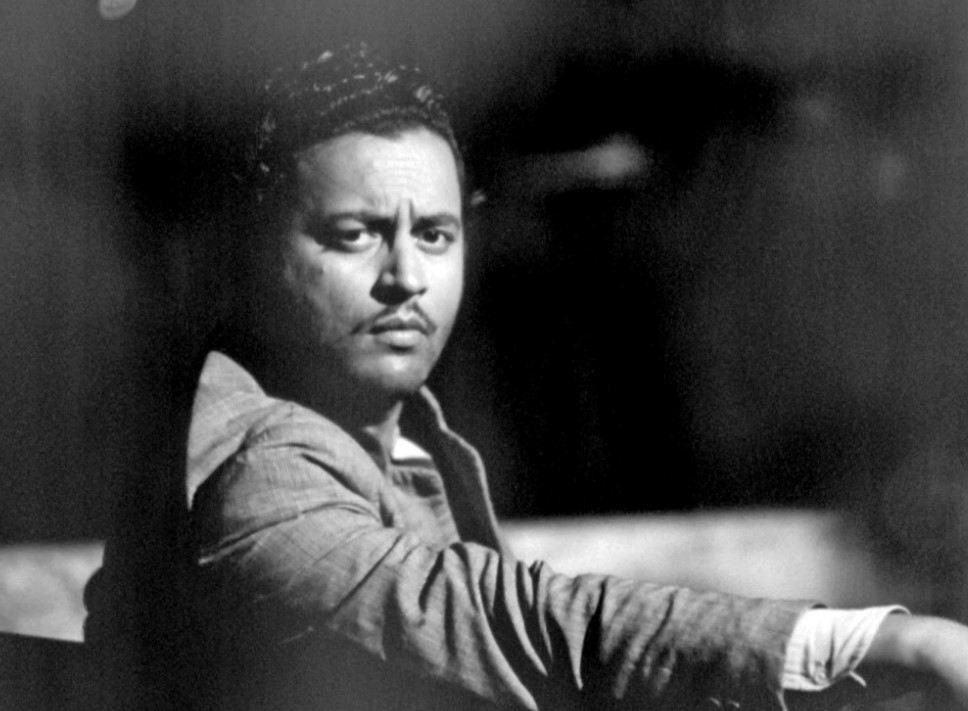
Vasanth Kumar Shivashankar Padukone, known to the world as Guru Dutt, was more than just a filmmaker; he was a poet of the moving image, a master of melancholia, and an artist whose brief but brilliant career left an indelible mark on Indian cinema. Born on July 9, 1925, Dutt’s cinematic journey, tragically cut short at the age of 39, produced a handful of masterpieces that continue to resonate with audiences and inspire filmmakers worldwide.
The Auteur’s Signature: Blending Artistry and Mainstream
Guru Dutt emerged during the “Golden Age” of Indian cinema, a period marked by grand narratives and star-driven vehicles. Yet, Dutt carved a unique niche by infusing commercial cinema with a profound artistic sensibility. He was a pioneer in blending mainstream appeal with poetic depth, creating films that were both emotionally stirring and visually stunning.
His filmmaking style was distinctive, characterized by:
- Chiaroscuro Lighting: Dutt, along with his legendary cinematographer V.K. Murthy, masterfully employed light and shadow to create evocative imagery. This play of light not only added dramatic flair but also mirrored the inner turmoil and complex emotions of his characters. Scenes like “Waqt Ne Kiya Kya Haseen Sitam” from Kaagaz Ke Phool or “Jaane Kya Tune Kahi” from Pyaasa are iconic examples of their visual artistry.
- Seamless Integration of Music: For Dutt, songs were not mere diversions but integral to the narrative. He pioneered a new language of cinema where lyrics and music were woven into the storytelling, enhancing mood, revealing character, and advancing the plot. His collaborations with lyricists like Sahir Ludhianvi and singers like Geeta Dutt (his wife) and Mohammed Rafi resulted in some of Hindi cinema’s most timeless and soul-stirring melodies.
- Psychological Depth: Dutt’s characters were rarely black or white. He explored the nuances of the human condition, depicting individuals grappling with moral dilemmas, societal pressures, and internal conflicts. His protagonists, often outsiders or disillusioned artists, reflected the angst of a sensitive soul against a changing India.
- Thematic Richness: His films often delved into themes of societal disillusionment, the struggles of artists in a materialistic world, the complexities of love and relationships, and the existential search for meaning. He critiqued the post-colonial Indian society, highlighting issues like class divides and the dehumanizing effects of capitalism.
A Glimpse into his Masterpieces:
While Dutt directed only eight films, several have attained cult status and are considered classics of Indian cinema:
- Pyaasa (1957): Often regarded as his magnum opus, Pyaasa tells the story of Vijay, a struggling poet in a society that values material success over artistic merit. Deeply autobiographical in its emotional core, the film is a poignant exploration of unrequited love, artistic integrity, and the harsh realities faced by dreamers. Its songs, particularly “Yeh Duniya Agar Mil Bhi Jaye Toh Kya Hai,” are iconic expressions of despair and rebellion.
- Kaagaz Ke Phool (1959): This film is a heartbreaking, semi-autobiographical tale of a successful film director (played by Dutt himself) whose professional and personal life unravels amidst the fickle nature of fame and love. A commercial failure during its release, it is now recognized for its profound emotional depth, stunning cinematography, and its brave, introspective look at the director’s own struggles.
- Sahib Bibi Aur Ghulam (1962): Produced by Dutt and directed by his close associate Abrar Alvi, this film is a powerful commentary on the decaying zamindari system and the plight of women trapped within patriarchal structures. Meena Kumari’s portrayal of Chhoti Bahu, an aristocratic wife yearning for love and companionship, is legendary.
- Aar Paar (1954) & Mr. & Mrs. ’55 (1955): While later known for his melancholic dramas, Dutt also showcased his versatility with light-hearted, yet insightful, romantic comedies like these. They demonstrated his ability to craft engaging narratives with sharp dialogue and memorable songs, subtly critiquing societal norms even in lighter veins.
The Legacy That Endures:
Guru Dutt’s influence on Indian cinema is profound and enduring. Even decades after his untimely death in 1964, his films continue to be studied, celebrated, and restored for new generations. He is revered for:
- Elevating the Song Picturization: He transformed film songs from mere commercial insertions into integral and artistic components of storytelling.
- Pioneering a Noir Aesthetic: His early films, like Baazi (1951), introduced elements of noir, with dramatic shadows, morally ambiguous characters, and urban anxieties.
- Complex Female Characters: Dutt’s films often featured strong, unconventional, and emotionally complex female characters who were central to the narrative, reflecting the changing role of women in post-independence India.
- Inspiring Generations: Filmmakers from across India and even globally cite Guru Dutt as a significant influence, acknowledging his mastery of cinematic art and his unique blend of mainstream appeal with deeply personal expression. His vision of an artist battling an indifferent world remains profoundly relevant.
Guru Dutt was a true visionary, an artist who poured his soul into his work. His films, with their lyrical beauty, profound emotional resonance, and timeless themes, stand as a testament to his genius, securing his place as one of the greatest filmmakers in the annals of Indian cinema.
